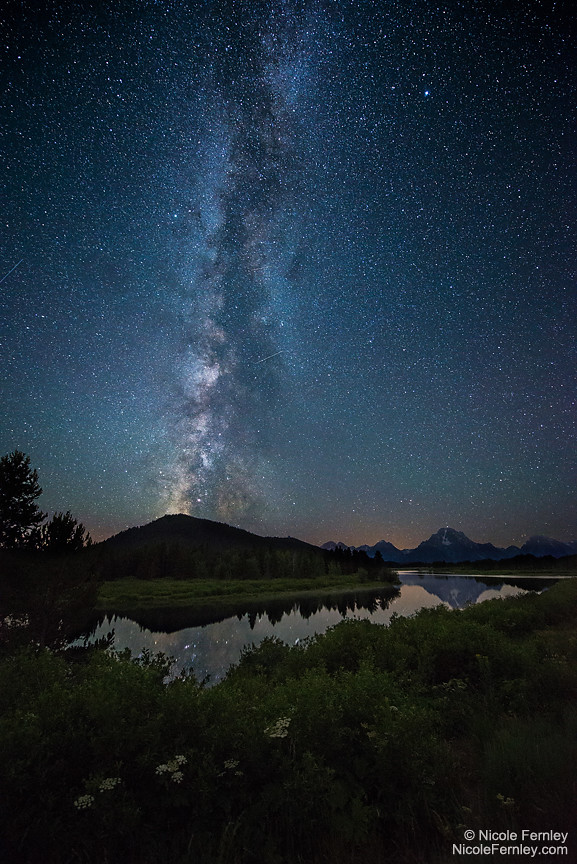 Milky Way over Oxbow Bend by nbanjogal, on Flickr
Milky Way over Oxbow Bend by nbanjogal, on FlickrSo without further ado, here are the programs and apps I've been using to get the job done:
The Photographer's Ephemeris. This tool has been indispensable for figuring out sunset and rise as well as moonset and rise times (the sky must be moonless for good Milky Way captures, and it really isn't dark enough until two hours after sunset). The desktop version is free through the web, and you can buy an app for your phone or tablet for $9.99 USD.
Stellarium. I use Stellarium to plot the position of the Milky Way throughout the year. You can find a free desktop version at www.stellarium.org. There is a mobile version ($1.99 USD), but I've never used it (early versions weren't all that great). I should probably try it again though—I have Starwalk on my phone, but I've never been able to get it to do as much as Stellarium. Starwalk hasn't seemed reliable, but one of the night photographers I know swears by it.
Dark Sky Finder. I have found a couple of light pollution maps (you get the best skies in the areas marked grey or dark grey) at http://darksitefinder.com/maps.html and Welcome jshine.net - Hostmonster.com. I also use the Dark Sky Finder app on my iPad.
Weather radar apps. Since you need clear skies to shoot the stars, a good weather app is your friend . . . unfortunately I haven't found one that I love. If you have one to recommend, I'd be grateful, especially since I want to start chasing storms.
As I said above, I'll be trying out the PhotoPills app—supposedly it does almost everything the first three programs do (I think weather is not included).
So, what do you use? I'm always open to trying out new tools!



 Sign In
Sign In Create Account
Create Account
















What lens are you using? Also, I need some tips on settings.